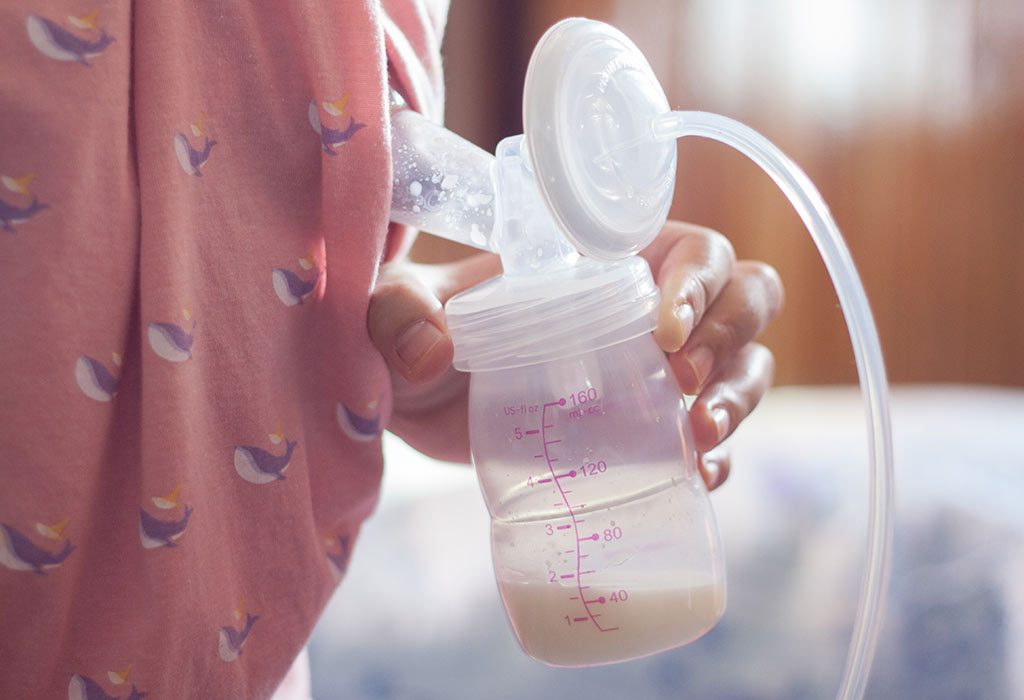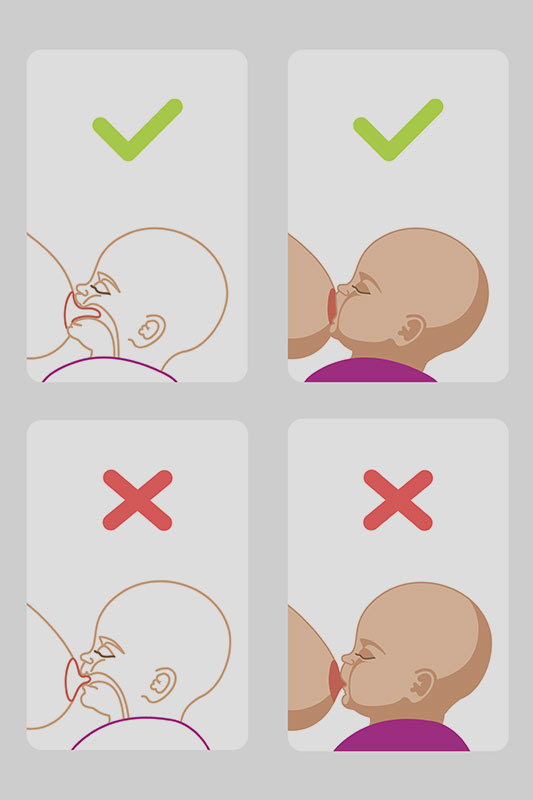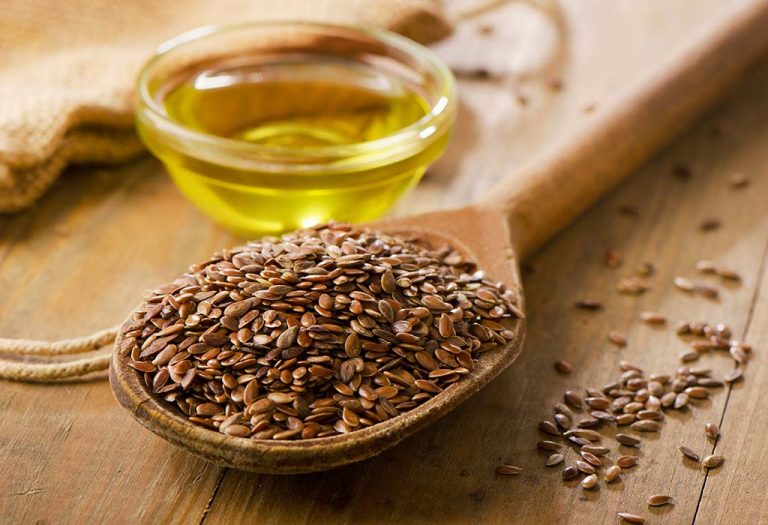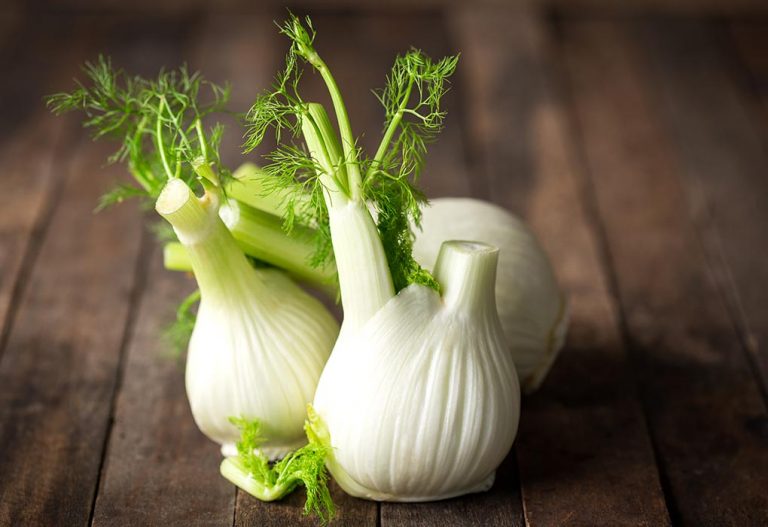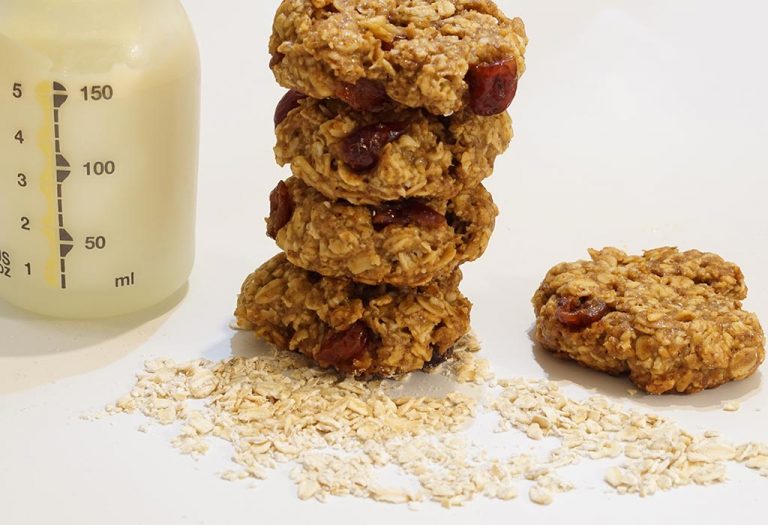One Breast Produces More Milk Than The Other: What to Do?
Doctors recommend exclusively breastfeeding babies for the first 6 months of their life. However, breastfeeding a baby isn’t always as easy as it sounds. Breastfeeding comes with its own complications. Sometimes, one of your breasts feels fuller than the other or one breast has a faster let-down reflex (release of milk from the breast). In addition, you may notice that one breast has more milk than the other, leading to an imbalance in feeding and discomfort. It’s important to monitor these variations and consult with a healthcare professional to ensure you and your baby receive the best care and support during the breastfeeding journey.
Keep reading to understand why there are differences in breast milk supply, and how you can increase milk supply in both the breasts.
Is It Normal for One Breast to Produce More Milk?
Breasts produce milk according to the demand-and-supply rule. So, if you or your baby prefers, say the left breast over the right one, the left breast will produce more milk than the other. This could lead to low milk production in the other breast (slacker boob), which is quite normal. When your body senses that there is a greater requirement for milk from one side, it produces a larger quantity of breast milk on that side to meet the increased demand.
How Long Does It Last?
The duration of one breast producing more milk than the other can vary. For some mothers, this issue may resolve on its own within a few weeks as the body adjusts to the baby’s feeding patterns. However, for others, it can persist throughout the entire breastfeeding period. Various factors such as breastfeeding technique, frequency of feeding, and baby’s preference for one breast over the other can influence how long this imbalance lasts.
What Causes an Uneven Production of Milk in the Breasts?
There are several reasons for the uneven production of breast milk in a nursing mother. Some of them are:
1. The Baby/Mother Has a Breast Preference
If your baby favours one breast over the other and feeds more on the preferred side, there will be more milk supply in one breast. In nursing mothers, continuously breastfeeding on one side produces more milk in that breast. That’s because milk production and let-down reflex are triggered by the baby’s suckling.
2. Surgeries and Injuries
If one of your breasts has been operated on, milk production may reduce in that breast. Injuries can also affect breast milk production. If you’ve sustained an injury to a particular breast in the past, it may have damaged the milk ducts and reduced milk production.
3. Anatomical Differences
Both the breasts aren’t exactly the same. One breast can have more milk ducts than the other. The structure of the nipples also varies. It may be easy for your baby to latch on to the nipple of one breast than the other.
4. Variations in Let-Down Reflex
The force with which milk is released from the breasts also makes a difference. If the let-down reflex in one breast is less forceful than the other, the baby may not prefer to feed on that breast. Alternately, if the let-down is too forceful, the baby may have trouble swallowing quickly and may not prefer that side.
How to Encourage Equal Milk Production in Both the Breasts?
There are some things you can do to stimulate your breasts to produce the same quantity of milk. Here they are:
- Start breastfeeding from the breast that produces less milk. When your baby suckles from the less-preferred breast, it will stimulate breast milk production.
- Use a breast pump to pump out the milk from the breasts after a nursing session. This will also help in increasing milk production. You can store this milk and feed it to the baby later. You can latch the baby in different positions to get the baby to drink milk from both the breasts. If not pumping, you can also dream feed your baby and latch the baby on the breast he/she prefers and gently slide the baby to another side without changing the position.
- Massage the less-preferred breast with your hand, and apply a warm compress to it for a few minutes. These techniques will stimulate milk production. However, do note that it may not work if the baby does not suck directly on that breast or if you don’t pump from this breast at all.
- Try new nursing positions to make it comfortable for your baby to feed on the breast that produces less milk. Usually, the football hold helps but a mother should try this position if there is an overactive letdown. In case of an overactive letdown, a laid back position or football hold might help. Also, in case of an overactive letdown, hand expressing a bit before latching baby on directly can also help.
- You can also offer the less-preferred breast when your infant is drowsy or tired.
- Start with the breast that produces less milk and switch sides at least 2-3 times during each feeding.
- Breastfeed whenever your baby wants it. Don’t delay or postpone feeding time. Emptying the breast increases milk production. Breastfeed every two hours or earlier if the baby demands it until the baby regains birth weight. After that, feed on demand. Just feed baby on demand and until the baby unlatches on his or her own. Remember: an improper latch on one side can lead to less milk transfer on that side and result in less milk production.
- Drink plenty of water and sleep well for optimal breast milk production. In case you feel that your milk production is low, you can speak to a lactation consultant about using a galactagogue. This is either a prescription medicine or a natural substance that helps to increase breast milk production. Some examples of herbal galactagogues include fenugreek leaves and seeds, garlic, fennel, barley, and alfalfa.
Does an Unequal Production of Milk Affect Your Baby?
As long as you nurse on demand, your baby will get enough breast milk to fulfil his nutritional needs. Even if one breast produces less milk, the other breast will produce more milk to compensate. You need not worry if you are feeding only from one breast as there are mothers who just feed from one side. The size of the breasts may differ, but you can feed from both sides equally to compensate for it.
FAQs
1. Is it normal for milk supply to fluctuate between breasts throughout the day?
Yes, it is normal for milk supply to fluctuate between breasts throughout the day. Factors such as baby’s feeding patterns, time of day, and hormonal changes can all contribute to variations in milk production between breasts. This fluctuation typically does not indicate a problem and is a natural part of breastfeeding.
2. Could my baby’s preference for one breast be a sign of an underlying issue?
In some cases, a baby’s preference for one breast over the other could indicate an underlying issue, such as a blocked milk duct or a difference in nipple shape that makes one side easier to latch onto. If you notice a persistent preference, it’s a good idea to consult with a lactation consultant or healthcare professional to rule out any potential problems.
3. How does one breast producing more milk impact milk storage?
When one breast produces more milk, you may find that you have an uneven milk storage. It’s important to label milk storage containers with the date and consider using milk from the higher-producing breast first to prevent wastage. Pumping and storing milk from the lower-producing breast can help build a supply and maintain balance over time.
All mothers have different experiences with breastfeeding their babies. You may panic if one of your breasts produces less milk but there’s no need to worry as long as you are feeding with the other breast. Your health also plays an important role in the production of breast milk, so take ample rest, eat nutritious foods and stay hydrated.
References/Resources:
1. Breastfeeding FAQs: Supply and Demand; Nemours Kids Health; https://kidshealth.org/en/parents/breastfeed-supply.html
2. The physiological basis of breastfeeding (Infant and Young Child Feeding: Model Chapter for Textbooks for Medical Students and Allied Health Professionals); National Library of Medicine; https://www.ncbi.nlm.nih.gov/books/NBK148970/
3. Engstrom. J, Meier. P, Jegier. B, Motykowski. J, Zuleger. J; Comparison of milk output from the right and left breasts during simultaneous pumping in mothers of very low birthweight infants (Breastfeeding Medicine); National Library of Medicine; https://pubmed.ncbi.nlm.nih.gov/17661579/; June 2007
4. Hill. P, Aldag. J, Zinaman. M, Chatterton Jr. R; Comparison of milk output between breasts in pump-dependent mothers (Journal of Human Lactation); National Library of Medicine; https://pubmed.ncbi.nlm.nih.gov/17991798/; November 2007
5. How to Tell if Your Breastfed Baby is Getting Enough Milk; American Academy of Pediatrics; https://www.healthychildren.org/English/ages-stages/baby/breastfeeding/Pages/How-to-Tell-if-Baby-is-Getting-Enough-Milk.aspx
6. Breastfeeding Challenges; American College of Obstetricians and Gynecologists; https://www.acog.org/clinical/clinical-guidance/committee-opinion/articles/2021/02/breastfeeding-challenges
7. Feeding from one breast; Australian Breastfeeding Association; https://www.breastfeeding.asn.au/resources/feeding-one-breast
Also Read:
Low Milk Supply
Side-Lying Breastfeeding
Breastfeeding from one Side
Foods That Increase Production of Breast Milk
Was This Article Helpful?
Parenting is a huge responsibility, for you as a caregiver, but also for us as a parenting content platform. We understand that and take our responsibility of creating credible content seriously. FirstCry Parenting articles are written and published only after extensive research using factually sound references to deliver quality content that is accurate, validated by experts, and completely reliable. To understand how we go about creating content that is credible, read our editorial policy here.






